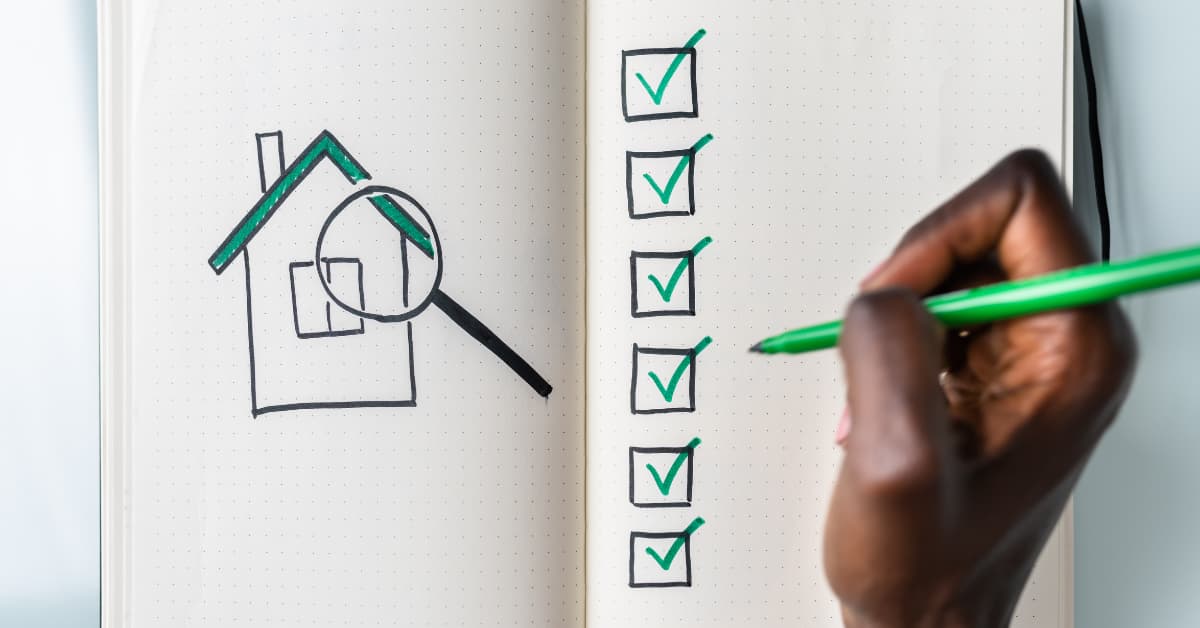Plan with clarity. Protect your legacy.
Estate planning is more than just preparing for the inevitable—it’s about taking control of your legacy and providing clarity for your loved ones. Having a clear estate planning checklist can transform this crucial task from overwhelming to manageable.
Working with an experienced estate planning attorney ensures your plan is comprehensive and legally sound while addressing your unique needs and circumstances.
This guide will walk you through the essential steps of creating a comprehensive estate plan, ensuring your wishes are honored and your loved ones are protected.
Key Takeaways:
- Estate Planning Is Essential for Everyone: Regardless of age or wealth, everyone benefits from having a plan for assets, healthcare, and dependents.
- Key Documents Form the Foundation: Essential documents include a will, living trust, powers of attorney, and healthcare directives.
- Take Inventory and Set Goals: List all assets—tangible, financial, and digital—and define your wishes for their distribution and care of loved ones.
- Update Your Plan Regularly: To keep your plan current, review it every 3–5 years or after major life changes.
- Work With Professionals: Legal and tax professionals ensure your estate plan is comprehensive, legally sound, and tax-efficient.
Understanding Estate Planning
Estate planning is the systematic approach to managing and distributing your assets both during your lifetime and after death. It encompasses not just financial assets but also healthcare decisions and guardianship arrangements.
Many people mistakenly believe estate planning is only for the wealthy, but everyone has an estate—whether it includes a home, savings account, personal belongings, or family heirlooms.
The process involves making informed decisions about how your assets will be managed and distributed while also addressing important healthcare and personal care preferences.
Who Needs Estate Planning?
Estate planning isn’t exclusive to any age group or wealth bracket. Whether you’re a young professional starting your career, a parent with young children, or approaching retirement, having an estate plan is crucial.
The need becomes particularly pressing when you own property, have dependents, or wish to support specific causes. Even those with modest estates benefit from having clear directives about healthcare decisions and asset distribution.
For young professionals, estate planning might focus on protecting growing assets and designating healthcare decision-makers. Parents need to consider guardianship arrangements and financial provisions for their children’s future.
Business owners must address succession planning and the smooth transfer of business interests. Retirees often concentrate on legacy planning and ensuring their lifetime of accumulated assets benefits their chosen beneficiaries.
Key Components of an Estate Plan
A comprehensive estate plan includes several essential elements working together to protect your interests and those of your beneficiaries:
- Essential Legal Documents
- Will or Last Testament: Directs asset distribution and guardianship
- Living Trust: Manages assets and potentially avoids probate
- Power of Attorney: Designates someone to handle financial matters
- Healthcare Directive: Specifies medical treatment preferences
- HIPAA Authorization: Allows access to medical information
- Important Designations
- Executor or Personal Representative
- Healthcare Proxy
- Guardian for Minor Children
- Trustee (if applicable)
The Comprehensive Estate Planning Checklist
Estate planning ensures your assets are distributed according to your wishes, your loved ones are protected, and your affairs are handled smoothly during difficult times. This checklist will guide you through each essential step to create a well-rounded and legally sound estate plan.
Step 1: Take Inventory of Your Assets
Start by compiling a full list of everything you own. This includes real estate, vehicles, bank accounts, investments, retirement funds, life insurance policies, and business interests. Personal property like jewelry, art, and family heirlooms should also be included, especially if they carry sentimental or financial value.
Don’t forget to document digital assets such as cryptocurrency, cloud storage, online accounts, and social media profiles. Include login credentials in a secure and accessible format.
Asset categories to include:
- Tangible Assets: Homes, vehicles, jewelry, collectibles, and other physical property
- Financial Assets: Bank accounts, investment portfolios, retirement accounts, business ownership
- Digital Assets: Cryptocurrency, online accounts, intellectual property, and cloud storage
Step 2: Organize Debts and Financial Liabilities
In addition to assets, create a list of all outstanding debts and obligations, such as mortgages, credit cards, auto loans, personal loans, and lines of credit. Include account numbers, lender contact info, and the location of original agreements.
This step helps your executor understand your financial picture and prevents overlooked obligations during estate administration.
Step 3: Define Your Estate Planning Goals
Clarify your intentions for how your assets should be distributed. Consider your family structure, charitable interests, plans for minor children or dependent adults, and business succession if applicable.
You may want to avoid probate, minimize taxes, support a charitable cause, or set up education funds for grandchildren. Clearly defined goals ensure your estate plan reflects your values and protects those who matter most.
Step 4: Select Key People to Manage Your Estate
Choose individuals you trust to manage different responsibilities in your estate plan, including:
- An executor to oversee your estate
- A guardian for minor children
- Powers of attorney for financial and healthcare decisions
- A trustee to manage any trust assets
Each role should be filled by someone responsible, trustworthy, and aligned with your wishes.
Step 5: Draft Essential Estate Planning Documents
Work with an experienced estate planning attorney to draft your core legal documents. These form the foundation of your plan and ensure your instructions are legally enforceable.
Common documents include:
- Last Will and Testament
- Revocable Living Trust (if applicable)
- Durable Power of Attorney
- Healthcare Power of Attorney
- Living Will or Advance Healthcare Directive
- HIPAA Authorization
- Letter of Intent
Step 6: Review and Update Beneficiary Designations
Some assets transfer directly through beneficiary designations-regardless of what your will says. These often include:
- Life insurance policies
- Retirement accounts (401(k), IRA)
- Bank and investment accounts with POD/TOD designations
Ensure all beneficiary designations are up to date and consistent with your estate plan to avoid unintended distributions.
Step 7: Consider Charitable Giving and Education Planning
If charitable giving is part of your legacy, consider how to structure donations through your will, trust, or donor-advised fund. Also, consider setting up 529 college savings plans or education trusts for children or grandchildren.
These goals can be integrated into your plan for both financial impact and personal meaning.
Step 8: Consolidate and Simplify Financial Accounts
Over time, it’s easy to accumulate multiple retirement or investment accounts. Consider consolidating where appropriate to reduce complexity and make estate administration easier. This also helps ensure assets aren’t lost or forgotten.
Step 9: Evaluate Estate Tax Implications
Understanding your potential estate tax exposure helps you preserve more wealth for your beneficiaries. Consider:
- Federal and state estate tax thresholds
- Lifetime gift tax limits
- Strategies such as lifetime gifting, irrevocable trusts, or charitable donations
Work with a qualified estate attorney or tax advisor to structure your plan for tax efficiency.
Step 10: Secure and Communicate Your Estate Plan
Store your estate documents in a secure but accessible location, such as a fireproof safe or with your attorney. Share the location with your executor and trusted family members.
Create a master file that includes:
- Copies of legal documents
- Account information and logins
- Contact info for advisors
- Instructions for accessing digital accounts
Clear communication prevents confusion and ensures your wishes are followed without delays.
Step 11: Review and Update Your Estate Plan Regularly
Revisit your estate plan every 2-3 years or after major life events such as:
- Marriage or divorce
- Birth or adoption of a child
- Death of a beneficiary or executor
- Significant asset or tax law changes
Regular updates keep your plan aligned with your current life and intentions.
Bonus Step: Document Your Final Wishes
Create a separate document outlining your preferences for funeral arrangements, burial or cremation, organ donation, and memorial services. While not legally binding, this guidance can be a great comfort to your loved ones.
You may also want to cancel or transfer any recurring charitable donations or online subscriptions.
Secure Your Legacy With an Estate Planning Checklist
Estate planning is ultimately an act of care that provides peace of mind for you and your family. A well-crafted and maintained plan ensures your wishes are honored, and your loved ones are protected, even as circumstances change.
Don’t leave your legacy to chance—contact Kelly Legal Group today to schedule your estate planning consultation. Our experienced attorneys will guide you through creating and maintaining a comprehensive estate plan that adapts to your changing needs while protecting your legacy and your loved ones’ futures.
FAQs About an Estate Planning Checklist
Do I need an estate plan if I’m young and healthy?
Yes, estate planning is essential regardless of age or health status. Young adults often have assets like retirement accounts, life insurance policies, and personal property that need proper management.
Additionally, having healthcare directives and powers of attorney in place ensures someone can make decisions on your behalf if you become unexpectedly incapacitated. Estate planning also allows you to designate guardians for any future children and establish a framework for asset management as your wealth grows.
How often should I update my estate plan?
While a general recommendation is to review your estate plan every three to five years, certain life events should trigger an immediate review.
These situations include major changes in financial circumstances, marriages, divorces, births, deaths of beneficiaries, relocating to a different state, or significant changes in tax laws. Regular reviews ensure your estate plan continues to reflect your current wishes and circumstances.
What’s the difference between a will and a trust?
A will is a legal document that takes effect after death and directs the distribution of assets through the probate process. A trust, on the other hand, can be effective immediately upon creation and may continue to operate during your lifetime and after death.
Trusts often offer additional benefits such as probate avoidance, privacy, and more control over asset distribution. However, both instruments serve important purposes, and many estate plans incorporate both a will and one or more trusts.
What happens if I die without an estate plan?
Dying without an estate plan, known as dying “intestate,” means state laws will determine how your assets are distributed, regardless of your wishes. This process can be time-consuming, expensive, and may result in distributions that don’t align with your preferences.
Additionally, without an estate plan, you lose the opportunity to name guardians for minor children, designate healthcare decision-makers, or implement tax-saving strategies. The court will make these crucial decisions based on state law rather than your personal wishes.






